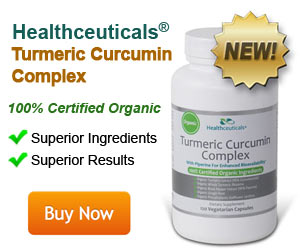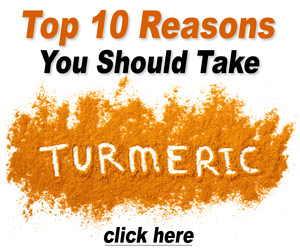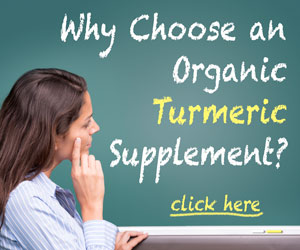Turmeric in the Fight against Leukemia
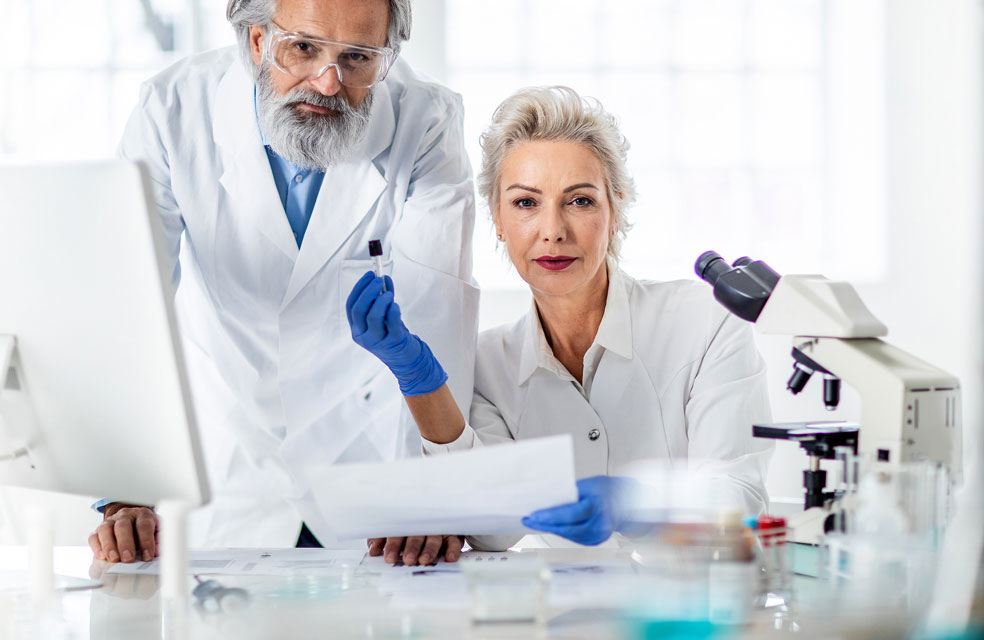
Leukemia is cancer of the blood. According to global statistics, in 2008 it was the 7th most common cancer in men and 11th in women. Specifically, leukemia cells are malignant immature white blood cells that uncontrollably replicate. (vi.162)
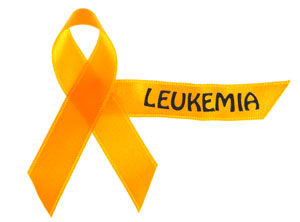
Normal blood cell formation begins in bone marrow. Accumulation of these excess cells replaces marrow and interferes with normal blood cell production. Research suggests that turmeric could help block the proliferation of these cancerous blood cells. (vi.91, 162)
What Causes Leukemia?
Although the exact causes are unknown, there are certain risk factors associated with leukemia. These include: (vi.195)
- Radiation
- Chemotherapy
- Genetics
- Smoking (doubles the risk for AML)
- Environmental toxins (e.g., benzene)
- Viruses (e.g., Epstein Barr and human T cell leukemia-lymphoma virus-1)
Oxidative Stress is Linked to Leukemia
Importantly, multiple clinical studies show a strong association between depleted natural antioxidants and high levels of free radicals in leukemia patients — a condition referred to as oxidative stress. Even after chemotherapy and during remission, these levels remain higher in those with leukemia compared to healthy people. (vi.162)
The persistent oxidative stress is linked to inflammatory conditions and a greater number of lesions in DNA strands. Turmeric and its compounds have antioxidant and anti-inflammatory properties that could help counteract oxidative stress. Whole extract and oil forms of turmeric, as well as individual compounds from it, have been shown to reduce the growth of leukemia cells. (vi.91, 162)
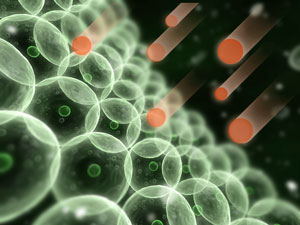
Excess free radicals can also make cancer-causing epigenetic changes on our genes. However, studies show that turmeric's curcumin compounds can block these epigenetic changes. Interestingly, high doses of curcumin actually generate ROS-type free radicals to prevent these epigenetic changes by leukemia cells. (vi.162)
What Kind of Blood Cells Are Involved in Different Types of Leukemia?
Generally speaking, leukemia involves white blood cells. There are various kinds of white blood cells, which are also called leukocytes. They serve vital roles in the immune system by protecting against disease-causing pathogens such as viruses, bacteria, parasites, and even cancer cells. Leukemia can cause high counts in sub-types of these cells. (vi.195-197)
The different types of leukemia depend upon the type of white blood cell affected: (vi.195-197)
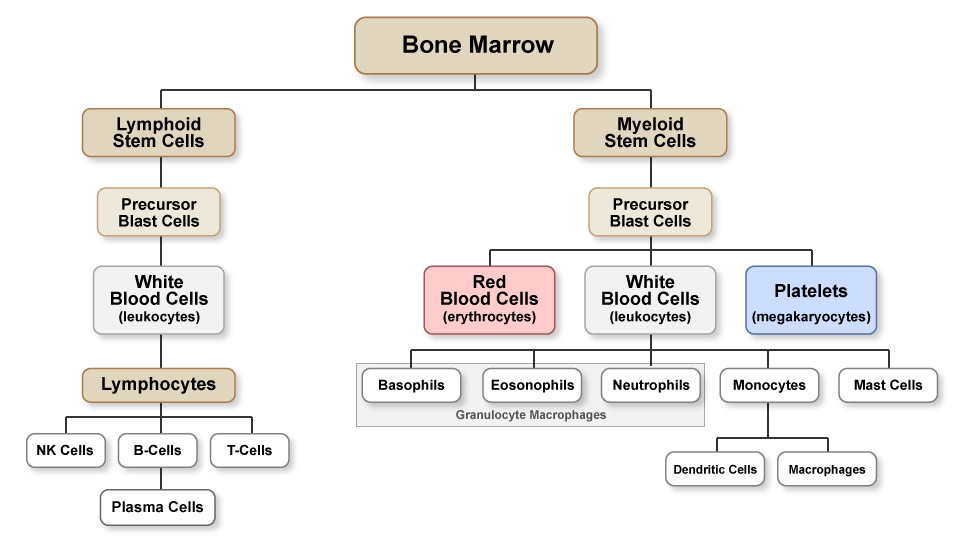
Figure VI.12: Types of Blood Cells and Leukemia
In acute types of leukemia, symptoms develop quickly. Conversely, chronic types can take many years before exhibiting symptoms. The four general classifications for leukemia are: (vi.195-197)
| TYPE | PREVALENCE | OTHER DETAILS |
|---|---|---|
| LYMPHOBLASTIC LEUKEMIAS | ||
|
Acute lymphoblastic leukemia (ALL) |
Most common in children. (vi.195) |
Develops from precursor lymphocyte B cells in the bone marrow. (vi.196) |
|
Chronic lymphoblastic anemia (CLA) |
Occurs mostly in adults older than age 55. (vi.195) |
Develops from lymphocyte B cells in the lymph nodes. (vi.196) |
| MYELOGENOUS (MYELOID) LEUKEMIAS | ||
|
Acute myelogenous leukemia (AML) |
Most common type of leukemia in adults. The average age of onset is 67 years old. (vi.196, 198) |
|
|
Chronic myelogenous leukemia (CML) |
Occurs mostly in adults in their 50s and 60s; slightly more prevalent in men. (vi.195-196) |
|
Conventional Treatments
Standard treatment includes: (vi.195-196)
- Antibody immunotherapy
- Blood transfusions
- Chemotherapy (e.g., imatinib for CML)
- Interferon
- Radiation
- Stem cell transplants
Curcumin Activity against Leukemia
Lab and animal experiments show that turmeric's curcumin compounds have a number of effects against the different types of leukemia: (vi.11, 41, 56-57, 162, 199)
| TYPE OF LEUKEMIA | WHAT IT DOES | WHY IS IT IMPORTANT? |
|---|---|---|
CML (K562 cell line) |
↓ STAT transcription factors ↓ NF-κB and AP-1 transcription factors ↑ Caspases -8 & -9 |
↓ Inflammatory conditions that promote cancer. ↓ Formation of new blood vessels that feed cancer growth and spread. ↓ Cancer cell growth. ↓ Cancer cell resistance to cell death. ↑ Apoptotic cancer cell death. |
ALL |
↓ Pl3 kinase enzyme ↓ Akt and NF-κB transcription factors ↑ p53 tumor suppressor |
↑ Apoptotic cancer cell death. ↑ Survival time. |
|
AML (Erythroleukemia caused by a virus.) |
↓ Bcl-2 inhibitor of apoptosis ↓ Raf-1 oncogene ↑ p53 tumor suppressor |
↑ Survival time. ↓ Cancer progression. ↓ Anemia. ↓ Infiltration of spleen. |
AML (HL-60 cell line) |
↓ NF-κB transcription factor ↑ P21 and p27 tumor suppressors ↓ Cyclin D3 cell cycle protein ↑ CHOP transcription factor ↑ Bax pro-apoptotic protein ↑ Caspases -3 & -8 ↓ Bcl-2 inhibitor of apoptosis |
↑ ERSR, which promotes apoptosis. ↑ Apoptotic cancer cell death. ↓ Cancer cell proliferation, especially when combined with ↓ Potential for cancer to metastasize. |
CLL (T-cell leukemia) |
↓ JAK ↓ STAT3 transcription factor |
↓ Cancer cell growth. ↑ Apoptotic cancer cell death. |
CLL (B-cell) |
↓ Akt, STAT3 and NF-κB transcription factors ↓ Mcl-1 and XIAP survival proteins |
↑ Apoptotic cancer cell death. ↓ Chemoresistance, especially when administered right before green tea extract. |
Additionally, curcumin has been shown to protect lymphocytes against toxic chemotherapy agents. In the lab, it also stimulates phagocytosis — one of the ways the immune system's leukocytes get rid of microbes. This suggests curcumin could help protect susceptible leukemia patients from deadly infections. (vi.162)
Other Turmeric Compounds That May Help Block Leukemia
Turmeric contains phytochemical compounds and nutrients in addition to curcumin that research suggests could also help fight leukemia. These include:
| TURMERIC COMPOUND | EFFECTS |
|---|---|
|
(also known as eucalyptol) |
↓ Growth of leukemia cells. (vi.153) ↑ Death of leukemia cells. (vi.153) |
|
↓ Growth of leukemia cells. (vi.153) ↑ Death of leukemia cells. (vi.153) |
|
|
↓ Growth of leukemia cells. (vi.153) ↑ Death of leukemia cells. (vi.153) |
|
|
↑ Death of leukemia cells. (vi.91) |
|
|
↓ Growth of leukemia cells. (vi.78) ↑ Death of leukemia cells. (vi.78) ↑ Caspase-3, an enzyme that induces cell death. (vi.78) ↓ Inhibitors of apoptosis (proteins that help cancer cells survive). (vi.78) |
|
|
Kills myelogenous leukemia cancer cells by breaking up DNA strands. (vi.194) |
|
|
↓ Growth of leukemia cells. (vi.153) ↑ Death of leukemia cells. (vi.153) |
|
|
↓ Growth of leukemia cells. (vi.153) ↑ Death of leukemia cells. (vi.153) |
|
|
↓ Growth of leukemia cells. (vi.153) ↑ Death of leukemia cells. (vi.153) |
|
|
↓ Growth of leukemia cells. (vi.139) ↑ Death and cell cycle arrest of leukemia cells. (vi.139, 141) ↑ Tumor suppressor proteins. (vi.139) ↓ Inhibitors of apoptosis (proteins that help cancer cells survive). (vi.139) |
|
|
↓ Growth of AML cells. (vi.194) Toxic to AML cancer cells. (vi.194) |
|
QUERCETIN (vi.79) |
↓ Growth of leukemia cells. (vi.201) ↑ Kinase proteins that stimulate enzymes which promote death of cancer cells. (vi.140) ↓ Leukemia cells from replicating. (vi.155) ↑ Cancer cell death. (vi.140) |
|
Breaks up DNA and kills myelogenous leukemia cancer cells. (vi.194) |
|
|
↓ Growth of leukemia cells. (vi.153) ↑ Death of leukemia cells. (vi.153) |
Join the 1000s of People Who Are Discovering the Benefits of Turmeric.
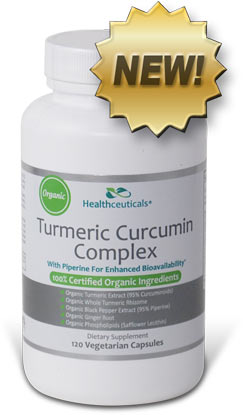
Healthceuticals® Turmeric Curcumin Complex
100% Certified
Organic ingredients
- Organic Turmeric Extract - standardized to 95% curcuminoids.
- Organic Whole Turmeric - provides full spectrum antioxidant, anti-inflammatory turmeric benefits, including turmerones and numerous vitamins, minerals, and phytonutrients
- Organic Black Pepper Extract - standardized to 95% piperine; dramatically enhances bioavailablity.
- Organic Phospholipids - markedly improve absorption.
- Organic Ginger - works synergistically with turmeric to provide more powerful benefits.
- Absolutely FREE of potentially harmful additives and fillers such as magnesium stearate.




